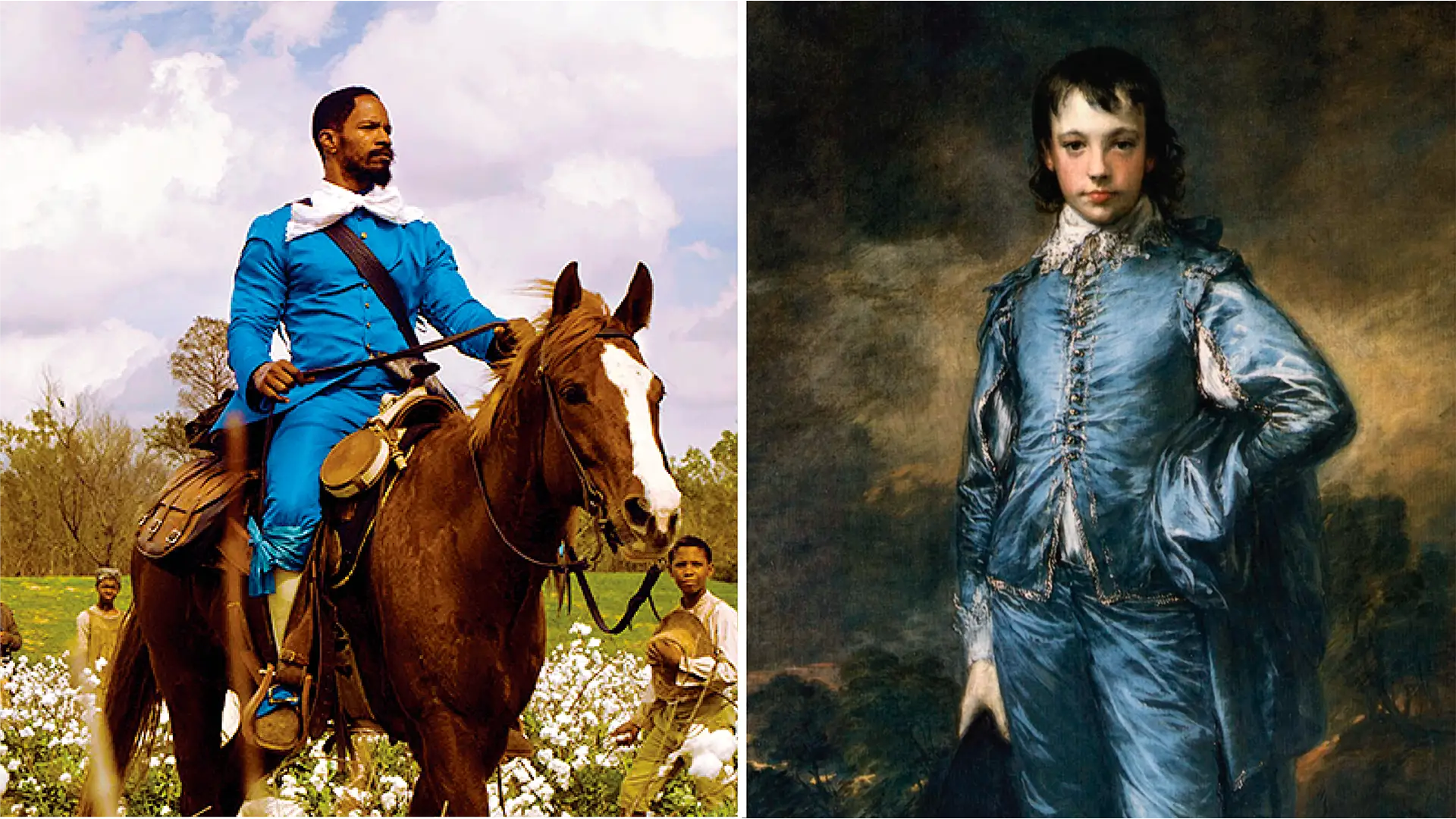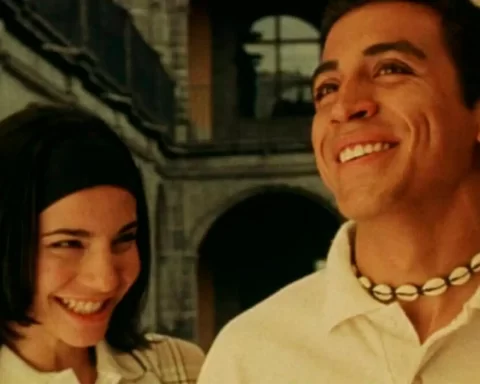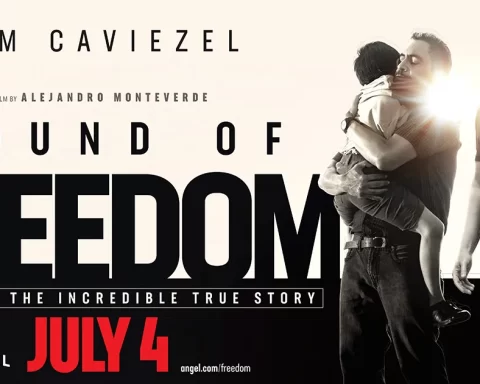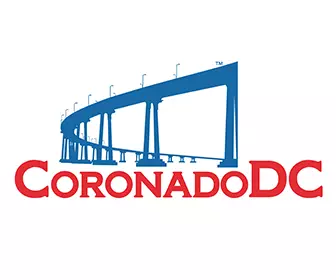Movies, often referred to as moving pictures, share a deep and intertwined relationship with static visual art. Directors and cinematographers frequently draw inspiration from classical and contemporary paintings to craft scenes that resonate with emotional depth, visual splendor, and symbolic meaning. Here, we explore some of the most striking instances where paintings have inspired unforgettable moments in cinema.
“Melancholia” (2011) – John Everett Millais “Ophelia”
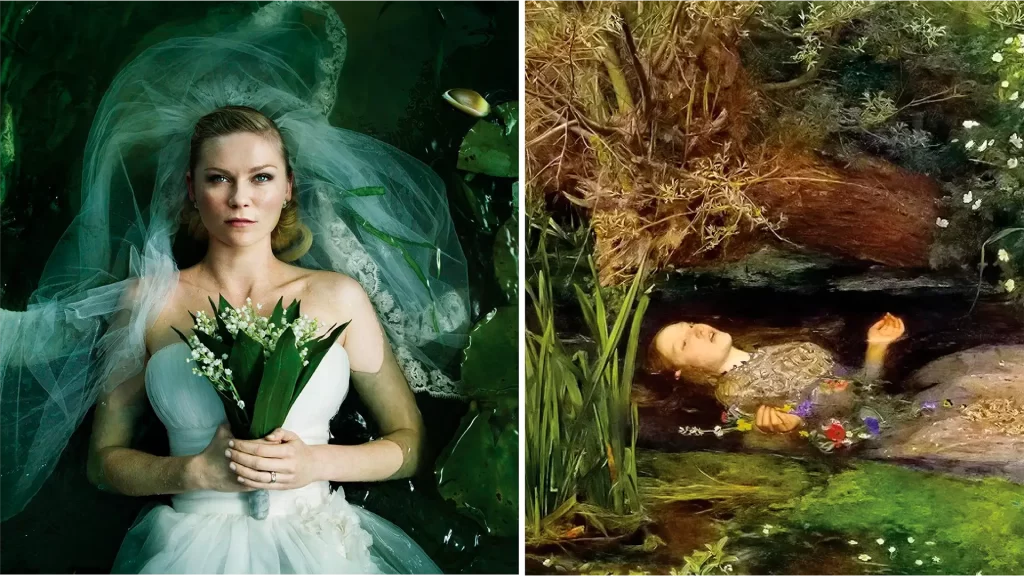
Lars von Trier’s apocalyptic drama “Melancholia” draws heavily from the Pre-Raphaelite painting “Ophelia” by John Everett Millais. The painting, which depicts Shakespeare’s Ophelia floating serenely in a stream just before her demise, finds a powerful echo in the film’s opening sequence. Kirsten Dunst’s character, Justine, is shown lying in a stream in a similar pose, symbolizing her descent into despair and the impending doom of the planet. This visual reference sets the tone for the film, blending beauty with a sense of tragic inevitability.
“Shutter Island” (2010) – Gustav Klimt “The Kiss”
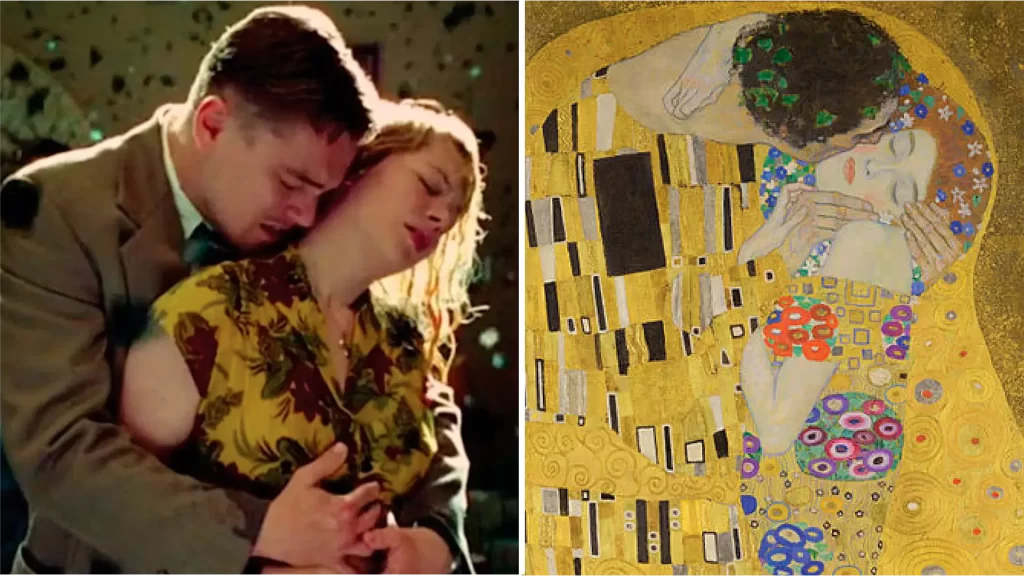
In Martin Scorsese’s “Shutter Island,” a dream sequence subtly references Gustav Klimt’s “The Kiss,” enriching the film’s emotional and visual depth. The scene, where Teddy Daniels (Leonardo DiCaprio) embraces his wife Dolores (Michelle Williams) in a golden, ethereal setting, mirrors the intimate and transcendent quality of Klimt’s painting. This visual homage underscores Teddy’s profound love and grief, symbolizing his struggle between reality and illusion while enhancing the film’s themes of memory, madness, and the elusiveness of truth.
“Marie Antoinette” (2006) – Jacques-Louis David “Napoleon Crossing the Alps”

In Sofia Coppola’s “Marie Antoinette”, a visual reference to Jacques-Louis David’s “Napoleon Crossing the Alps” can be seen in a scene where Count Fersen (Played by Jamie Dornan) is dressed in a striking uniform and mounted on a horse, evokes the commanding and heroic pose of Napoleon in David’s iconic painting. This visual reference subtly contrasts with the film’s otherwise light and intimate portrayal of Marie Antoinette’s life, bringing a moment of martial grandeur and historical gravitas. The evocation of David’s artwork serves to highlight Fersen’s role as a dashing and influential figure in Marie Antoinette’s life, while also touching on themes of power, influence, and the romanticized ideals of leadership and heroism.
“Django Unchained” (2012) – Thomas Gainsborough’s “The Blue Boy”

In Quentin Tarantino’s “Django Unchained” (2012), there is a notable reference to Thomas Gainsborough’s famous painting “The Blue Boy” through the character Django’s attire in a key scene. When Django (Jamie Foxx) selects his outfit after gaining his freedom, he chooses an eye-catching, bright blue ensemble reminiscent of the elegant 18th-century attire worn by the subject in Gainsborough’s painting. This sartorial choice is significant as it juxtaposes Django’s newly acquired status and confidence with the historical context of the painting, symbolizing a bold assertion of identity and defiance against the oppressive structures of the time. The striking blue costume not only pays homage to Gainsborough’s masterpiece but also serves to visually emphasize Django’s transformation and the film’s themes of empowerment and reclamation of dignity.
“The Truman Show” (1998) – René Magritte “Architecture au clair de lune”

In Peter Weir’s “The Truman Show” (1998), there is a subtle yet powerful reference to René Magritte’s painting “Architecture au clair de lune” (“Architecture in the Moonlight”). Magritte’s painting features a serene, almost surreal nocturnal scene where a crescent moon illuminates a classical architectural facade, evoking a sense of quiet mystery and otherworldliness. Similarly, in “The Truman Show,” the constructed reality of Seahaven, with its meticulously crafted facade and perpetual day-like atmosphere, mirrors Magritte’s blend of the real and the surreal. This visual reference underscores the artificiality and staged nature of Truman’s world, highlighting the film’s exploration of reality, perception, and the boundaries between truth and illusion. The homage to Magritte’s work enhances the film’s thematic depth, emphasizing the eerie beauty and inherent deception of Truman’s manufactured environment.
“The Adventures of Baron Munchausen” (1988) – Sandro Botticelli “The Birth of Venus”
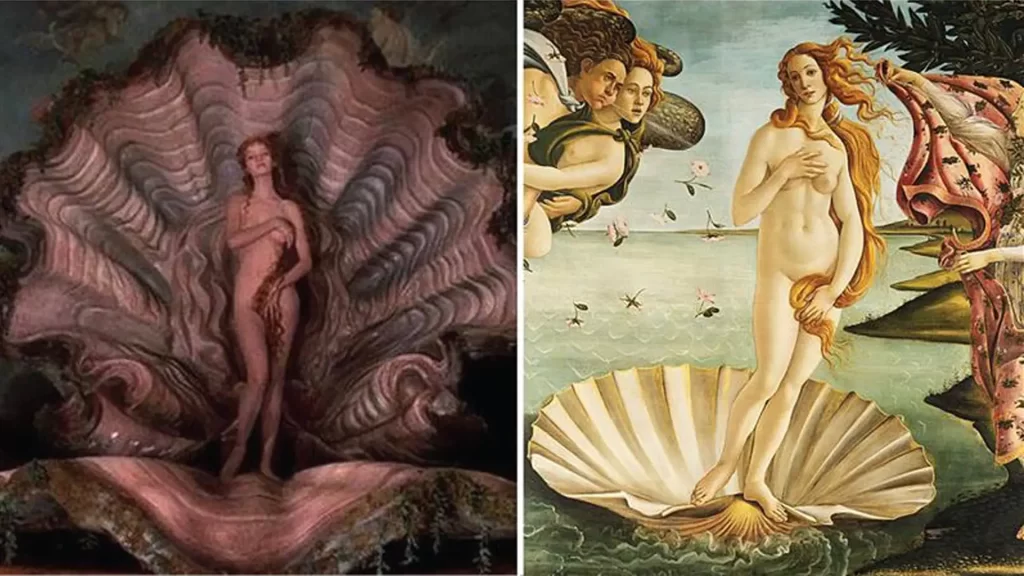
In Terry Gilliam’s fantastical film “The Adventures of Baron Munchausen”, there is a vivid reference to Sandro Botticelli’s renowned painting “The Birth of Venus.” This homage occurs in a scene where the character Venus, played by Uma Thurman, emerges from a giant clam shell, strikingly reminiscent of Botticelli’s depiction of Venus rising from the sea on a shell. The visual reference captures the ethereal beauty and classical elegance of the painting, infusing the film with a sense of mythic wonder and artistic grandeur. This scene not only highlights Gilliam’s penchant for blending art and fantasy but also enhances the narrative’s whimsical and surreal tone by invoking the timeless image of Venus’s birth.
The intersection of painting and film is a testament to the enduring power of visual storytelling. By drawing inspiration from the canvas, filmmakers enrich their narratives with layers of meaning, texture, and emotion. These cinematic homages to paintings not only honor the legacy of great artists but also highlight the timeless nature of visual expression, bridging the gap between two of the most powerful art forms.










